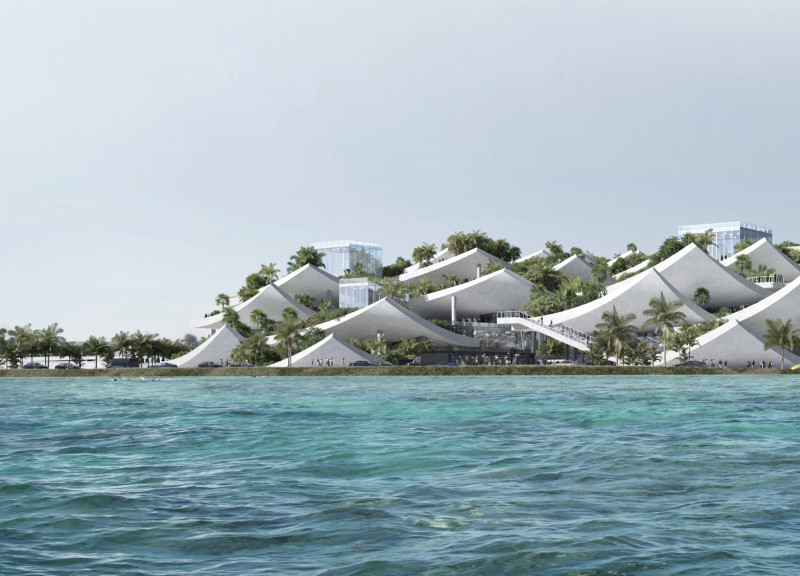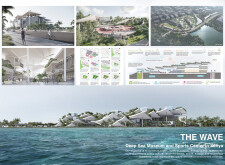5 key facts about this project
**Project Overview**
Located in Sanya, China, "THE WAVE" encompasses a multifunctional Deep Sea Museum and Sports Center aimed at harmonizing cultural, ecological, and recreational elements within its coastal context. The architectural intent is to create a facility that fulfills educational objectives while fostering community engagement. Through the integration of advanced design methodologies and sustainable practices, the structure addresses contemporary environmental challenges while catering to diverse user needs.
**Spatial Strategy and Architectural Form**
The design of "THE WAVE" is characterized by sweeping, dynamic roofs that evoke the movement of ocean waves. This fluid architectural form serves both aesthetic and functional purposes, providing natural shading and minimizing solar heat gain within interior spaces. The layout features flexible areas adaptable for exhibitions, sports training, and community events, with high ceilings and large openings designed to enhance ventilation and create an open atmosphere. Ample public spaces, including a rooftop skate park and eco wetlands, further promote community interaction and showcase educational aspects of marine ecosystems.
**Materiality and Sustainability**
Emphasizing a commitment to sustainability, the project utilizes carefully selected materials to reduce environmental impact while incorporating local resources. Key materials include concrete for structural integrity, glass for natural light and views, and timber to create warmth in select spaces. Innovative features such as green roofs and permeable pavements not only enhance biodiversity and improve insulation but also support effective rainwater management. The facility is equipped with non-potable water treatment and passive cooling systems, underscoring its energy-efficient design and contributing to overall sustainability goals.



















































